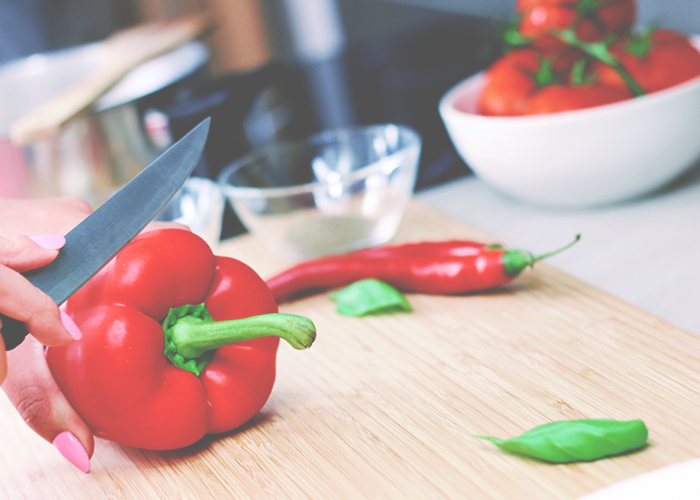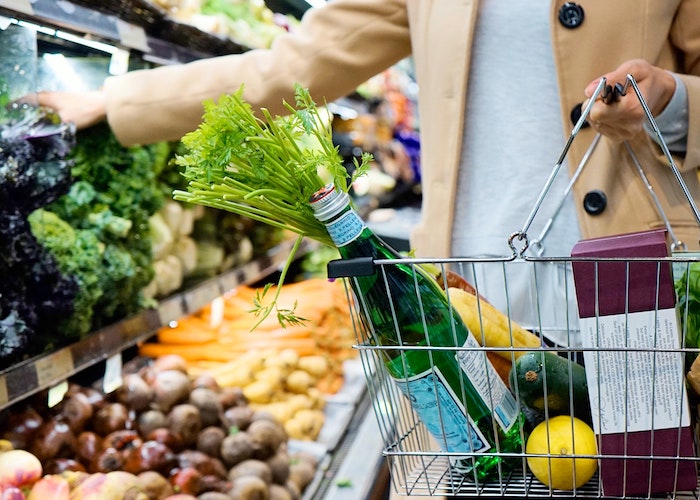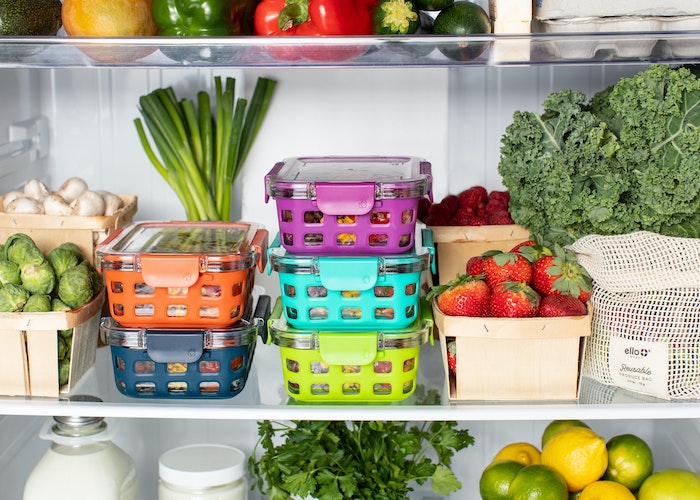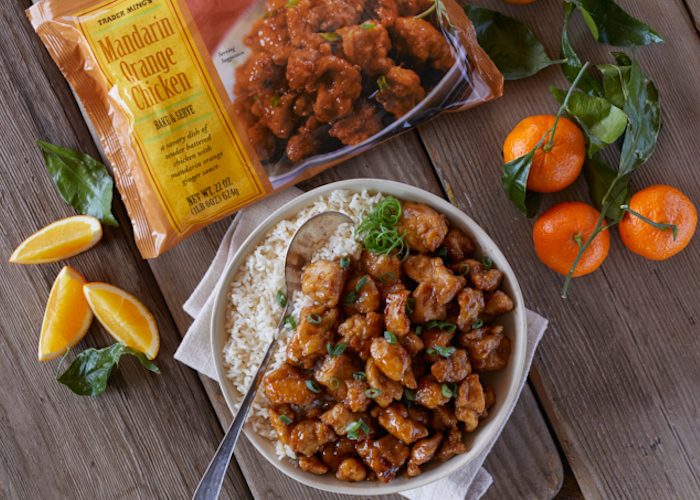The Easiest & Most Cost-Effective Way To Upgrade Your Life
If you’re a 20-something like me living in The Big City, USA, you’re helplessly bombarded by our progressively foodie culture. Every city I’ve lived in in the last five years — from New York City’s Harlem, to Albuquerque, to my beloved Nashville — has progressively become inundated with specialty food shops. Coffee shops outfitted with laboratory-grade beakers and mocktail menus, bistros serving $16 specialty burgers smeared with spicy chutney, food trucks doling out tiny esoteric Latin/Asian fusion tacos, and the ubiquitous romantically lighted French/American date night restaurants offering lavender crème brûlée (and little glasses of Fernet. Doesn’t it all sound so sexy? Let’s not even get started on the upscale cocktail bars with “small plates” and the breweries sprouting up like so many funky mushrooms in every neighborhood. And the pressure to grab a few friends or your SO on a Thursday night to “experience” these delightful epicurean feats seems to mount every time a new joint opens up.
But what’s all this about? I feel like there could be an entire other article written about how our generation is being heavily marketed to patron these excessively foodie establishments, starting with television culture bringing us Chopped, the Food Network, every delicious reincarnation of the Anthony Bourdain travel/food series. Or how the well-intentioned “farm to table” movement has led us on a weird tangent demanding the hyper-localized, the extremely earthy, the (probably long overdue but confusingly price hiked) glorification of peasant food and offal dishes. But as tempting as it is, I’m going to refrain from analyzing all that business and suffice to say, today’s culture is literally shoving expensive foodie interests down our gullets all the time.
And are you like me? Just now noticing that stubborn five or ten pounds on your belly and the hit to your checking account? We, all savvy hot young thangs, easily cognitively get that roasting a chicken at home (even if you hit up that fantastic local butcher selling them from a farm within 50 miles) is much more cost-effective than going out.
A chicken big enough to feed four people and still provide leftovers for a couple tasty sandwiches costs between $10-15 at my store. Ask your buddies to bring a side they’re really proud of, or a mid-priced bottle of wine or growler from one of those new breweries, and you’ve got yourself a fAnCy dinner with everyone investing less than $20. For more detailed inspiration, revisit Chelsea’s restaurant-worthy night-in. Alone for the night, and craving takeout egg drop soup? You can make it at home quickly for literally change (and no tip!) with things you already have in your fridge (chicken broth, a couple of eggs, spices, and soy sauce to taste). You already know if you pack a salad to work instead of buying one every day you’ll rack up huge amounts in savings. So, the money-saving aspect is immediately clear upon inspection, if you build some basic kitchen and cooking skills, and invest in a few pieces of hardware, you’re golden like a perfectly sautéed onion.
The healthfulness of eating out is another important issue, especially in those tantalizing new restaurants with their carefully curated music and delectable furnishings calling out to you night after night. It seems like more homecooks are succumbing to the pressures to eat out, and this coincides with the burgeoning incidence of obesity, which is a key marker for many health issues. The American Heart Association tells us that obesity can induce Type II Diabetes, and greatly increases the risk of cardiovascular events like heart attacks.
So, why exactly is restaurant eating often not as healthful as cooking in, even IF you chose what appears to be a “healthy” dish, like fish or a salad or a locally and ethically raised beef entrée? The answer may lie in the fact that we choose less healthy dishes to begin with, perhaps because we don’t invest the same thoughtfulness into picking an item off a menu as we do when we prepare dishes with our own hands, or maybe because eating out feels like a treat (truffle frites don’t count when you treat yo’self, even though cognitively we know a fry is a fry). There are also some inherently higher calorie components in restaurant food that we’d typically skip at home, for example, the “monter au beurre” finish, which Anthony Bourdain famously reveals in his book Kitchen Confidential: “In a professional kitchen, we sauté in a mixture of butter and oil for that nice brown, caramelized color, and we finish nearly every sauce with it (we call this monter au beurre); that’s why my sauce tastes creamier and mellower than yours.” Restaurant and prepackaged sauces often punch up your dish with a shocking amount of extra calories.
Another commonly fingered culprit of the extra big belly that comes with excessive dining out are the XL portions. There is some thought-provoking evidence out there to suggest that people consume more food when they are served from a larger bowl. Oversize plates and salad bowls may be sexy looking in the restaurant but perhaps lead us to consume more calories than we would at home, with our smaller dishware.
This can undermine even the healthiest menu choice. The American Journal of Preventive Medicine also urges us to be thoughtful consumers, with another study linking serving size to overconsumption (Scourboutakos, M. J. (2012). Restaurant Menus: Calories, caloric density, and serving size. The American Journal of Preventive Medicine, 43 (3), 249-255.) Our eyes, apparently, are not bigger than our bellies.
For me, the best option out there to maintain my health, cash, and skinnies denim collection is to cook most meals at home, and pack lunches when reasonable. Fairly recently, The Splendid Table did a great article based around Leanne Brown’s cookbook Good and Cheap: Eat Well on $4/Day. It started out as her thesis for a Master’s degree, and garnered so much interest that it developed into a book. The brilliance behind it is that the cookbook evolved from inspection of SNAP and food stamp programs, and utilized those frameworks to guide healthy eating on a strict budget. My budget may not be $4 a day, but I find these nutrient-conscious recipes inspiring. TFD also shares easy recipes, such as slow cooking for busy types who don’t get their jollies from chopping and roasting all day. It is possible to cook at home, and save your cash while being good to your body — even for those who don’t know a pairing knife from a pear, or a blender from a food processor.
Another thing to mention here is that cool small businesses, like these exciting new restaurants and coffee shops, absolutely deserve their spot in our culture. I feel lucky that I got to taste enjera or kimchi at such a young age when my parents didn’t even have the opportunity to try tofu or quinoa until they were well into adulthood. But eating out daily is not only wearing away at our debit cards, it also poses the health question as well. I’m personally experimenting with eating at home six days a week and choosing, when I do go out, to appreciate the luxury for what it is. If I’m caught out in a bind for a meal, I try to think carefully about ordering the healthiest meal possible. Today, the foodie culture does offer us really great personal opportunities to share and learn about distant cultures while at the same time encouraging us to open up our comfort zones, and this food-lovin’ woman is navigating it as best I can.
Pique your interest? Check this stuff out too!
1. Chelsea’s seriously genius money-saving restaurant techniques https://thefinancialdiet.com/7-money-rules-every-restaurant-addict-needs-to-know/
2. The National Institutes of Health goes more in-depth about health issues linked with obesity: http://www.nhlbi.nih.gov/health/health-topics/topics/obe/risks
3. The Upshot, a NY Times health-oriented blog, gives us some simple and reasonable eating guidelines from a Medical Doctor: http://www.nytimes.com/2015/04/21/upshot/simple-rules-for-healthy-eating.html?_r=0
Keisha is a nurse in Nashville, TN. She likes sandwiches and seeing local bands in dive bars with her boyfriend, who sometimes wears tshirts with his own face on them. She is on Instagram.




